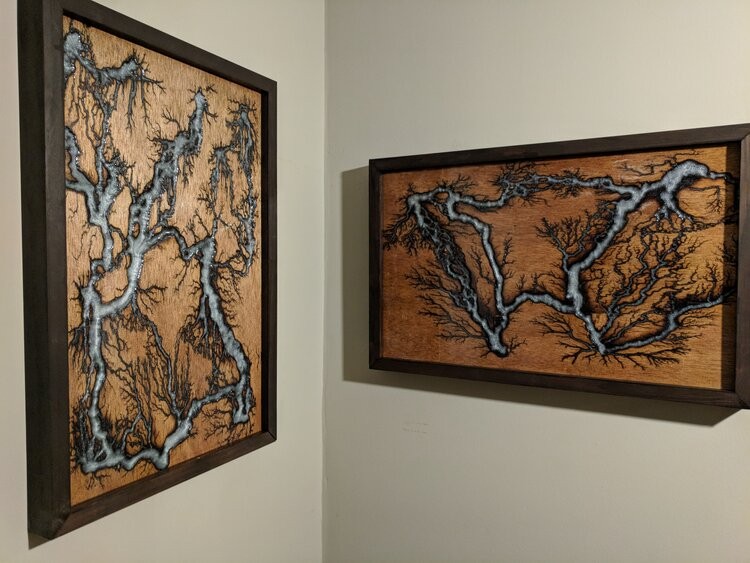Equipped with a microwave hooked up to jumper cables, molten aluminum and one hell of a death wish, Miles Carlson is not a typical artist by any stretch of the imagination.
Over the past year, Carlson has created various types of art, from furniture to wall hangings, under the moniker “Dangerous Art MPLS.”
Carlson, who graduated from the University of Minnesota in 2000 with an engineering degree, worked in the engineering software business for 10 years before taking a five year sabbatical to travel the globe.
Upon returning to the U.S., Carlson said he wanted to take a different approach, hoping to find a line of work with a little more room for creativity. He traded in his mouse and keyboard for a hammer and nails, finding work as a carpenter. Now, Carlson incorporates those skills into his art, but he’ll be the first to say he’s not an artist.
“I call myself an element wrangler, not an artist. I more control and influence what these elemental forces do,” he said.
But wrangling the elements is far easier said than done. To create his “dangerous art,” Carlson uses a homemade tool, which he describes as a “ripped apart microwave oven with jumper cables hooked up to it,” to create etchings in large slabs of wood.
Adding copper nails at the ends to get a precise burn, Carlson puts the two probes at different spots on the wood and flips the switch. As thousands of volts run through the tool, electricity is channeled into the wood, creating a lightning pattern across the wood until the circuit completes itself.

The final product, which Carlson sometimes calls “trapped lightning,” is then filled with colored resin or left as is for a more traditional burnt look.
Creating this type of art is extremely dangerous, as people can electrocute themselves or even die if the processes are not done carefully. So, Carlson says, please do not try this at home.
Carlson also creates sculptures he calls “space coral,” which are made by pouring molten aluminum into an aquarium full of Orbeez. People are generally very curious about his work when they first see it, he said.
“People have a lot of questions. It causes a lot of… concentrating faces, trying to figure out what in the heck it is I do.”
Part of the appeal of Carlson’s work is the uniqueness of it but also his lack of formal art training, practicing his craft in a garage for about a year before sharing it. According to fellow artist and friend Jessamy Stallman, there’s an innocence to Carlson’s art that can’t be taught in a classroom.
“It’s way more childlike… like when they tell you to grab a stick and dip it in the paint and draw from five feet away and see what happens,” she said. “He does that naturally.”








